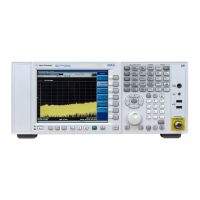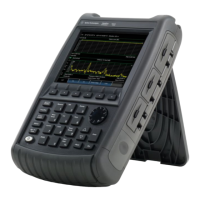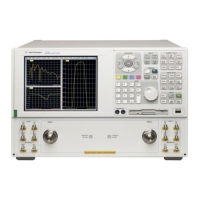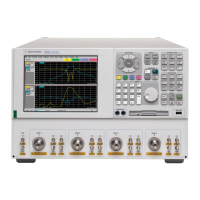Functions and Measurements 3
N9342C/43C/44C User’s Guide 47
After the performance of the source/analyzer
combination has been verified, the DUT (device
under test, for example, an amplifier) would be
inserted between the directional coupler output
and the analyzer input.
2 Set one source (signal generator) to 300 MHz
and the other source to 301 MHz. This will
define the frequency separation at 1 MHz. Set
both sources equal in amplitude, as measured by
the analyzer. In this example, they are both set
to –5 dBm.
3 Set the analyzer center frequency and span:
• Press [PRESET] (Factory preset)
• Press [FREQ] > 300.5 > {MHz}
• Press [SPAN] > 5 > {MHz}
4 Reduce the RBW until the distortion products
are visible:
• Press [BW] > {RBW}, and reduce the RBW using
the knob, the arrow keys or the numeric key-
pad.
5 Move the signal to the reference level:
• Press [Peak]
• Press [MARKER] > {Marker To} > {To Ref}
6 Reduce the RBW until the distortion products
are visible:
• Press [BW] > {RBW}, and reduce the RBW using
the knob, the arrow keys or the numeric key-
pad.
7 Activate the second marker and place it on the
peak of the distortion product (beside the test
signal) using the Next Peak:
• Press [MARKER] > {Delta}
• Press [Peak] > {Next Left (Right) PK}
NOTE
The coupler used should have a high isolation between
the two input ports to limit the sources intermodulation.
